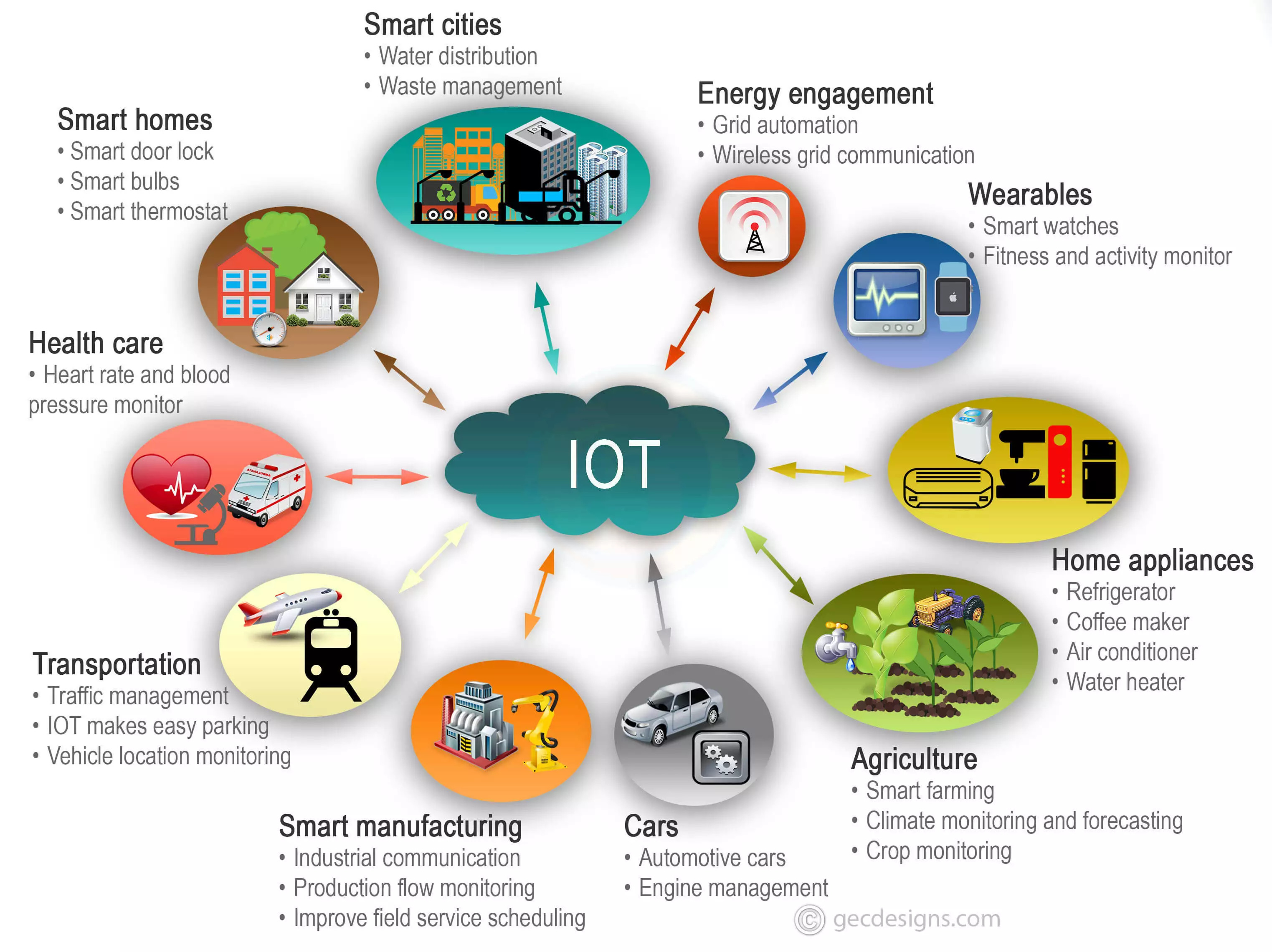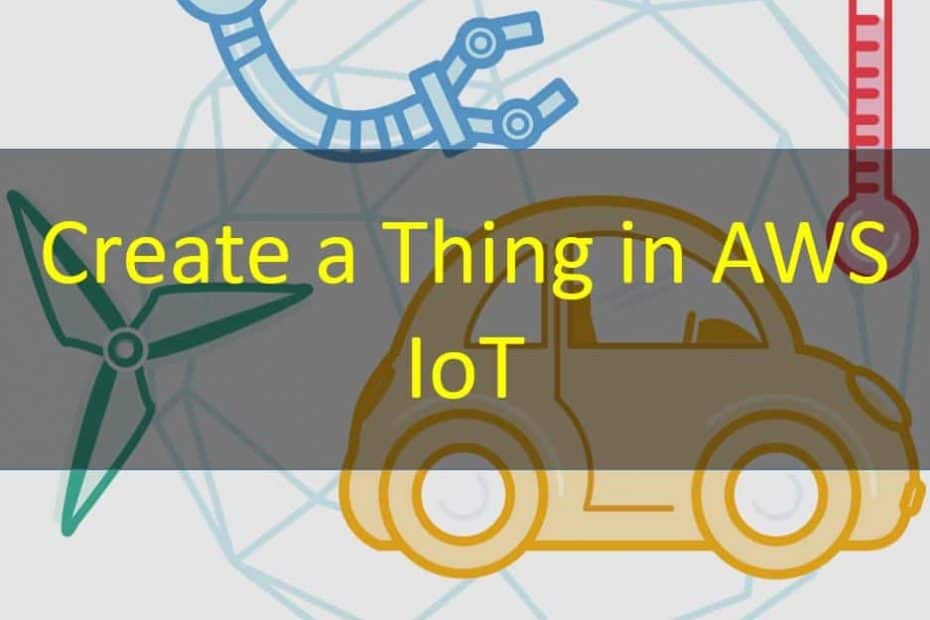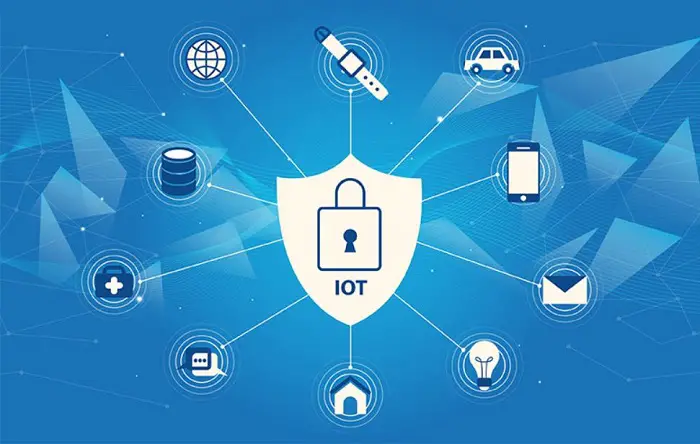The Role of AWS in Internet of Things (IoT) Infrastructure
IoT, or the Internet of Things, refers to the interconnection of physical devices, vehicles, buildings, and other objects embedded with sensors, software, and network connectivity. These interconnected devices collect and exchange data, enabling advanced automation, analytics, and optimization across various industries. AWS (Amazon Web Services) plays a crucial role in IoT infrastructure, offering a suite of services that facilitate building, deploying, and managing IoT solutions.
AWS provides a scalable, secure, and cost-effective platform for IoT projects. With its extensive range of services, AWS enables organizations to easily connect and manage devices, process and analyze data, and create intelligent applications. By utilizing AWS for IoT, businesses can reduce time-to-market, minimize infrastructure costs, and ensure the highest level of security and data privacy.
Key AWS IoT Services Overview
AWS offers a comprehensive suite of IoT services that cater to various aspects of IoT infrastructure. These services enable organizations to build robust, secure, and scalable IoT solutions. Here’s an overview of essential AWS IoT services:
- AWS IoT Core: The heart of AWS IoT services, AWS IoT Core enables secure, bi-directional communication between IoT devices and the AWS cloud. It can manage millions of devices and supports multiple communication protocols, such as MQTT, HTTP, and WebSocket.
- AWS IoT Greengrass: AWS IoT Greengrass extends AWS functionality to edge devices, allowing them to run local compute, messaging, data caching, and machine learning capabilities. This service ensures seamless integration between edge devices and the cloud, enabling real-time data processing and decision-making.
- AWS IoT Analytics: AWS IoT Analytics simplifies data analysis from IoT devices by filtering, transforming, and enriching data before storing it in a data store or sending it to machine learning models. This service helps organizations uncover insights from IoT data and make data-driven decisions.
- AWS IoT Device Defender: AWS IoT Device Defender is a security service that helps organizations secure their IoT devices and implement best practices for device authentication, authorization, and communication.
By leveraging these AWS IoT services, organizations can build a robust IoT infrastructure that ensures secure, efficient, and scalable communication between IoT devices and the cloud. This, in turn, enables advanced automation, analytics, and optimization across various industries.
Real-World Applications of AWS IoT
AWS IoT services have been successfully implemented in various industries, transforming the way businesses operate and deliver value to their customers. Here are some real-world examples of AWS IoT applications:
- Industrial Automation: AWS IoT enables industrial automation by connecting machines, sensors, and devices to the cloud. This integration allows for real-time monitoring, predictive maintenance, and energy management, improving efficiency and reducing downtime in manufacturing processes.
- Smart Homes: AWS IoT powers smart home solutions by connecting devices like thermostats, lights, and security systems. This connectivity enables homeowners to control their homes remotely, optimize energy consumption, and enhance safety and comfort.
- Wearable Devices: AWS IoT is used in wearable devices to collect and analyze health data, providing valuable insights for fitness enthusiasts and healthcare professionals. This data can be used for personalized coaching, remote monitoring, and early detection of health issues.
- Agriculture: AWS IoT helps optimize farming practices by monitoring soil moisture, temperature, and crop growth. This data can be used to automate irrigation, fertilization, and pest control, increasing crop yield and reducing resource waste.
These examples demonstrate the transformative potential of AWS IoT solutions in various industries. By harnessing the power of IoT, businesses can unlock new opportunities, streamline operations, and create innovative services that deliver value to their customers.
How to Get Started with AWS IoT
To begin leveraging AWS IoT services, follow these steps:
- Create an AWS Account: If you don’t already have one, sign up for an AWS account at href=”https://aws.amazon.com/” target=”_blank” rel=”noopener noreferrer”>https://aws.amazon.com/. AWS offers a free tier for 12 months, which is ideal for testing and experimenting with IoT services.
- Set up AWS IoT Core: Access the AWS Management Console and create a new AWS IoT Core thing to represent your IoT device. Register and authenticate your device using AWS IoT Core’s secure onboarding process.
- Connect IoT Devices: Connect your IoT devices to AWS IoT Core using one of the supported communication protocols. You can use AWS IoT Device SDKs to simplify device connectivity and interaction with AWS IoT services.
- Explore AWS IoT Services: Familiarize yourself with the various AWS IoT services, such as AWS IoT Greengrass, AWS IoT Analytics, and AWS IoT Device Defender, to understand how they can enhance your IoT solution.
- Leverage AWS Documentation and Tutorials: AWS provides extensive documentation and tutorials to help you get started with IoT services. Visit the AWS IoT Developer Guide and the AWS IoT Device SDK for Python Tutorial for more information.
By following these steps, you can quickly set up and start using AWS IoT services to build, deploy, and manage your IoT solutions.
Best Practices for AWS IoT Security
Securing IoT infrastructure is crucial for protecting sensitive data and maintaining the integrity of connected devices. AWS IoT offers robust security features to help safeguard your IoT solutions. Here are some best practices for securing AWS IoT infrastructure:
- Device Authentication: Ensure that every IoT device is registered and authenticated using AWS IoT Core’s secure onboarding process. This process helps prevent unauthorized access and mitigates potential security risks.
- Data Encryption: Use data encryption to protect sensitive information transmitted between IoT devices and the AWS cloud. AWS IoT Core supports encryption using TLS (Transport Layer Security) and X.509 certificates.
- Access Control: Implement strict access control policies using AWS IoT Core’s fine-grained access control capabilities. This ensures that only authorized users and devices can interact with your IoT infrastructure.
- Security Audits: Regularly perform security audits and monitor IoT devices and services for unusual activity. AWS IoT Device Defender helps identify and mitigate security vulnerabilities by continuously monitoring device behavior and alerting you to any suspicious activities.
- Firmware Updates: Keep IoT device firmware up-to-date with the latest security patches and bug fixes. AWS IoT Greengrass enables over-the-air firmware updates, ensuring that your devices are always running the most secure software.
By following these best practices, you can significantly enhance the security of your AWS IoT infrastructure and protect your connected devices and data from potential threats.
Scaling AWS IoT Solutions
As the number of IoT devices and data grows, it’s essential to scale your AWS IoT infrastructure to accommodate increasing demands. AWS offers several services and features to help manage and optimize IoT infrastructure at scale:
- AWS IoT Core Rules Engine: The AWS IoT Core Rules Engine allows you to define actions based on device data, such as sending messages to AWS services or other devices. This enables you to process and analyze data in real-time, ensuring that your IoT infrastructure remains responsive and efficient as it grows.
- AWS IoT Device Management: AWS IoT Device Management enables you to organize, monitor, and remotely manage millions of devices. This service simplifies device onboarding, updates, and maintenance, ensuring that your IoT infrastructure remains secure and up-to-date as it scales.
- AWS IoT Analytics: AWS IoT Analytics simplifies data analysis from IoT devices by filtering, transforming, and enriching data before storing it in a data store or sending it to machine learning models. This service helps organizations uncover insights from IoT data and make data-driven decisions, even as the volume of data increases.
- AWS IoT SiteWise: AWS IoT SiteWise is a managed service that makes it easy to collect, organize, and analyze data from industrial equipment at scale. This service simplifies the process of monitoring and optimizing industrial operations, enabling you to make informed decisions based on real-time data.
By leveraging these AWS services and features, you can effectively scale your IoT infrastructure, ensuring seamless operation and optimal performance as the number of devices and data grows.
Monitoring and Troubleshooting AWS IoT Systems
Monitoring and troubleshooting AWS IoT systems is crucial for maintaining the smooth operation of your IoT infrastructure. AWS provides several tools and services to help you identify and resolve common issues:
- AWS IoT Device Defender: AWS IoT Device Defender continuously monitors device behavior and alerts you to any suspicious activities. This service helps you detect and respond to security issues, ensuring the integrity of your IoT infrastructure.
- AWS IoT Analytics: AWS IoT Analytics simplifies data analysis from IoT devices, enabling you to identify trends, patterns, and anomalies in your data. This service helps you troubleshoot issues and optimize performance, even as the volume of data increases.
- AWS CloudTrail: AWS CloudTrail records API calls made to AWS services, providing visibility into user activity and API usage. This service helps you identify and respond to security and operational issues, ensuring the smooth operation of your IoT infrastructure.
- AWS X-Ray: AWS X-Ray helps you analyze and debug distributed applications, including those built using AWS IoT services. This service enables you to identify and resolve performance issues, ensuring that your IoT infrastructure remains responsive and efficient.
By leveraging these AWS tools and services, you can effectively monitor and troubleshoot your AWS IoT systems, ensuring the smooth operation of your IoT infrastructure and maintaining the highest levels of performance and security.
Cost Optimization Strategies for AWS Internet of Things
When implementing AWS Internet of Things (IoT) solutions, managing costs is an essential aspect of ensuring a successful and sustainable project. By employing cost optimization strategies, you can minimize expenses without compromising performance or functionality. Here are some tips to help you optimize costs for your AWS IoT infrastructure.
Select Appropriate Pricing Models
AWS offers various pricing models for its IoT services, allowing you to choose the one that best fits your needs and budget. For instance, AWS IoT Core provides a pay-as-you-go model, while AWS IoT Greengrass and AWS IoT Analytics offer capacity-based pricing. Carefully evaluate each pricing model and select the one that aligns with your usage patterns and resource requirements.
Utilize Reserved Instances
AWS IoT services often involve using compute resources, such as Amazon EC2 instances. By committing to reserved instances, you can save up to 75% compared to on-demand instances. Consider reserving instances for a fixed term if you have steady-state workloads or predictable usage patterns.
Monitor Usage Patterns
Regularly monitoring your AWS IoT usage patterns can help identify potential cost-saving opportunities. Use AWS Cost Explorer to analyze your spending and identify trends, peaks, and anomalies. Based on your findings, adjust your resource utilization and scaling strategies accordingly.
Optimize Data Transfer Costs
Data transfer costs can add up quickly in IoT solutions. To minimize these expenses, leverage AWS’s data transfer pricing structure, which offers reduced rates for intra-region and internet data transfers. Additionally, use AWS Direct Connect or VPC Peering to transfer data between services within the same region at no cost.
Implement Efficient Data Processing and Storage
Efficiently processing and storing data can significantly impact your AWS IoT costs. Use features like AWS IoT Rules Engine to filter and process data at the edge, reducing the amount of data sent to the cloud. For data storage, consider using AWS IoT Device Defender’s just-in-time data retention policy, which automatically deletes old device data based on your specified retention period.
Automate Resource Management
Automating resource management can help prevent unnecessary costs due to idle or underutilized resources. Use AWS Lambda, AWS CloudFormation, or AWS Systems Manager to automate the provisioning, scaling, and decommissioning of resources based on your application’s needs.
Take Advantage of AWS IoT Free Tier
If you’re new to AWS IoT, take advantage of the free tier to experiment with services and learn how to optimize costs. The AWS IoT free tier includes 250,000 messages per month for AWS IoT Core, 1 million messages per month for AWS IoT Rules Engine, and 10,000 device shadows for AWS IoT Device Management, among other benefits.
Leverage AWS Cost Optimization Tools
AWS provides several tools and services to help optimize costs, such as AWS Cost Explorer, AWS Budgets, and AWS Cost and Usage Reports. Utilize these resources to analyze your spending, set budgets, and receive alerts when your costs exceed specified thresholds.
Follow Best Practices for Cost Optimization
Adhering to AWS’s best practices for cost optimization can help you minimize expenses and improve the efficiency of your IoT solutions. These practices include rightsizing instances, using spot instances, and implementing resource tagging for better cost visibility and management.
Consider Multi-Region Deployments
Deploying your AWS IoT infrastructure across multiple regions can help reduce latency and improve availability. However, this approach can also increase costs. Evaluate your requirements and consider using AWS Global Accelerator or AWS CloudFront to balance performance and cost.







